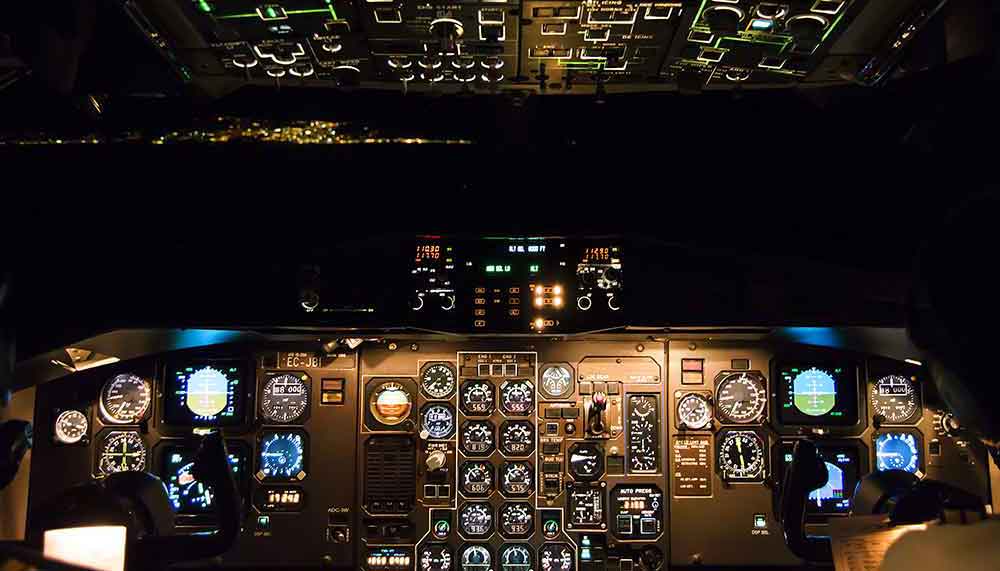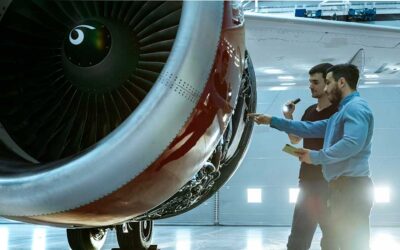Avionics Engineering: Navigating the Future of Flight
What is Avionics Engineering?
In the vast realm of aerospace engineering, a specialized field focuses not on the aerodynamics of flight or the aircraft structure but on the electronic systems that make modern flight possible: avionics. Avionics engineering encapsulates a range of designs, from navigation and communication to complex in-flight entertainment systems. This article delves into the evolution of avionics engineering, its origins, and one of its most awe-inspiring marvels.
The Birth of Avionics
The term “avionics” is a portmanteau of “aviation” and “electronics.” While the Wright brothers’ iconic first flight in 1903 didn’t require advanced electronics, the need for advanced navigational and communication tools became evident as aircraft grew more complex and began undertaking longer, more challenging flights.
World War Wonders
The World Wars played a significant role in the evolution of avionics. The warfare and surveillance requirements led to radio communications and radar innovations. World War II, in particular, saw a rapid development in radar technology, allowing aircraft to detect other planes and ground objects from great distances. These advances gave birth to the modern field of avionics engineering.
Jet Age and the Electronics Boom
The advent of the jet age in the mid-20th century brought with it faster, larger aircraft that required increasingly sophisticated electronic systems for navigation, communication, and control. The invention of the transistor and the rapid progress of semiconductor technology in the 1960s and 1970s supercharged the capabilities of avionics. Aircraft began to feature autopilot systems, advanced navigation aids, and improved communication tools, setting the stage for the digital revolution in avionics that was to come.
Transition to the Digital Era
The latter part of the 20th century was defined by the shift from analog to digital avionics systems. Digital technology allows for more precise, reliable, and complex system functions. Integrating computer systems into aircraft brought innovations like fly-by-wire controls, where electronic interfaces replaced manual controls. The cockpit transformed with the advent of the Glass Cockpit, where traditional dials and gauges gave way to Multi-Function Displays (MFDs) and Head-Up Displays (HUDs).
A Marvel of Avionics Engineering: The F-35’s Distributed Aperture System (DAS)
To highlight the pinnacle of avionics engineering, one need not look further than the Distributed Aperture System (DAS) onboard the F-35 Lightning II, a fifth-generation combat aircraft.
The DAS is a cutting-edge sensor system that provides pilots unparalleled situational awareness. Comprising six infrared cameras strategically placed around the aircraft, the system offers a 360-degree view of the aircraft’s surroundings, effectively allowing the pilot to “see” through the aircraft’s structure. This information is then projected onto the pilot’s helmet visor, ensuring critical data is always in sight.
But the marvel doesn’t end there. The DAS is also designed to detect and track missile launches, identify threats, and provide advanced targeting data. Its integration with other avionic systems onboard the F-35 allows for a seamless flow of information, ensuring the pilot is always ahead in the battlespace.
Challenges and the Road Ahead
Like all fields of engineering, avionics faces its challenges. With the increasing complexity of electronic systems comes the issue of cybersecurity. Ensuring that these systems are impervious to external threats is paramount.
AI in Avionics: Elevating Flight into the Future
Artificial Intelligence (AI) is rapidly reshaping various industries, and aviation is no exception. Avionics, the electronic systems used on aircraft, spacecraft, and satellites, stands to benefit immensely from the integration of AI. Here’s how AI can enhance avionics and consequently revolutionize the aviation sector.
- Enhanced Situational Awareness – Advanced sensors and AI algorithms can analyze vast amounts of data in real time, providing pilots with enhanced situational awareness. AI can predict and highlight potential threats, from other aircraft to unexpected weather phenomena, ensuring pilots and crew are always prepared for what’s ahead. AS PREVIOUSLY MENTIONED, the F-35’s Distributed Aperture System (DAS) is an excellent example of this capability, but AI can further refine such systems to be more predictive and adaptive.
- Predictive Maintenance – Aircraft generate vast amounts of data during flight. AI algorithms can analyze this data to predict when components might fail or require maintenance. By doing so, AI can help reduce unplanned downtimes, ensuring higher availability of aircraft and reducing maintenance costs. Predictive maintenance can result in safer flights and more efficient operations.
- Autonomous Flight Capabilities – AI can facilitate semi-autonomous functions, while fully autonomous commercial flights might still be a way off. These might include takeoff, landing, or even specific maneuvers in emergencies. Such capabilities can reduce the workload on pilots, especially during critical phases of flight.
- Flight Optimization – AI can analyze real-time meteorological data, air traffic, and other relevant factors to suggest optimal flight paths. This can result in fuel savings, reduced flight times, and minimal disruptions due to weather or air traffic constraints.
- Enhanced Communication Systems – Communication with air traffic control and within the aircraft is crucial. AI can aid in automating communication tasks, like responding to standard air traffic control queries or even filtering and prioritizing incoming communications for the pilot, ensuring that critical information doesn’t get lost.
- Cybersecurity Enhancements – Modern aircraft are increasingly connected, making them potential cyber-attack targets. AI can bolster cybersecurity by continuously monitoring avionic systems for anomalies, suggesting they might be under attack, and taking preventive measures.
- Training and Simulation – AI-powered simulations can adapt to the trainee pilot’s proficiency level, providing a tailored training experience. It can simulate various scenarios, ensuring pilots are well-equipped to handle any situation.
- Improving In-flight Entertainment and Passenger Comfort – AI can enhance in-flight entertainment systems on the passenger front by providing personalized content recommendations. Furthermore, AI can analyze data from various sensors to optimize cabin conditions, ensuring passenger comfort.
What is the relationship between avionics engineering and aerospace engineering?
Avionics engineering and aerospace engineering are closely related disciplines within the broader field of aeronautics and astronautics, but they focus on different aspects of aircraft and spacecraft design and operation.
Definition:
- Aerospace Engineering: This is a broad field that encompasses the design, development, testing, and production of aircraft, spacecraft, and associated systems and equipment. It’s split into two major subfields: aeronautical engineering (focused on aircraft) and astronautical engineering (focused on spacecraft).
- Avionics Engineering: A subset of aerospace engineering, avionics pertains specifically to the electronic systems used on aircraft, satellites, and spacecraft. This includes systems for navigation, communications, monitoring, and control.
Focus:
- Aerospace Engineering: Covers a wide range of topics, including aerodynamics, propulsion systems, structural design, materials, and many others.
- Avionics Engineering: Concentrates on designing, implementing, and managing onboard electronic systems. This includes everything from radar systems, flight control, and communication systems to entertainment systems in commercial aircraft.
Interdependence:
- The line between mechanical and electronic systems is becoming increasingly blurred in modern aircraft and spacecraft. As such, avionics engineers often collaborate closely with other aerospace engineers to integrate electronic systems into overall design and ensure that all systems work harmoniously.
Evolution:
- As aerospace vehicles become more complex and reliant on technology, the role of avionics in their design and operation has expanded. This means that while aerospace engineering provides the foundational knowledge of how aircraft and spacecraft operate, avionics engineering delves deeper into the critical electronic systems that make many modern flight and space travel innovations possible.
The Role of Avionics Engineers
Avionics engineers are highly sought after in the modern aerospace industry, and for good reason. Their expertise lies at the intersection of cutting-edge technology and aviation, enabling the creation and refinement of onboard electronic systems that ensure aircraft safety, efficiency, and functionality. As the aviation sector increasingly leans on technology—be it for communication, navigation, or enhanced user experiences—avionics engineers play a pivotal role. Their ability to integrate complex electronic systems while maintaining rigorous safety standards makes them indispensable.
Furthermore, as the dreams of autonomous flight and advanced aerial vehicles move closer to reality, the demand for their unique skill set will only grow, marking them as key players in the future of transportation.
Sky’s the Limit
From rudimentary radio systems in early aircraft to the awe-inspiring sensor suites in modern fighters, avionics engineering has come a long way. It’s a testament to human ingenuity and the drive to constantly push the boundaries of what’s possible. One thing is sure as we stand on the cusp of a new era, with the promise of autonomous aircraft and innovative avionics systems that can think independently. In avionics, the sky is not the limit but just the beginning.




